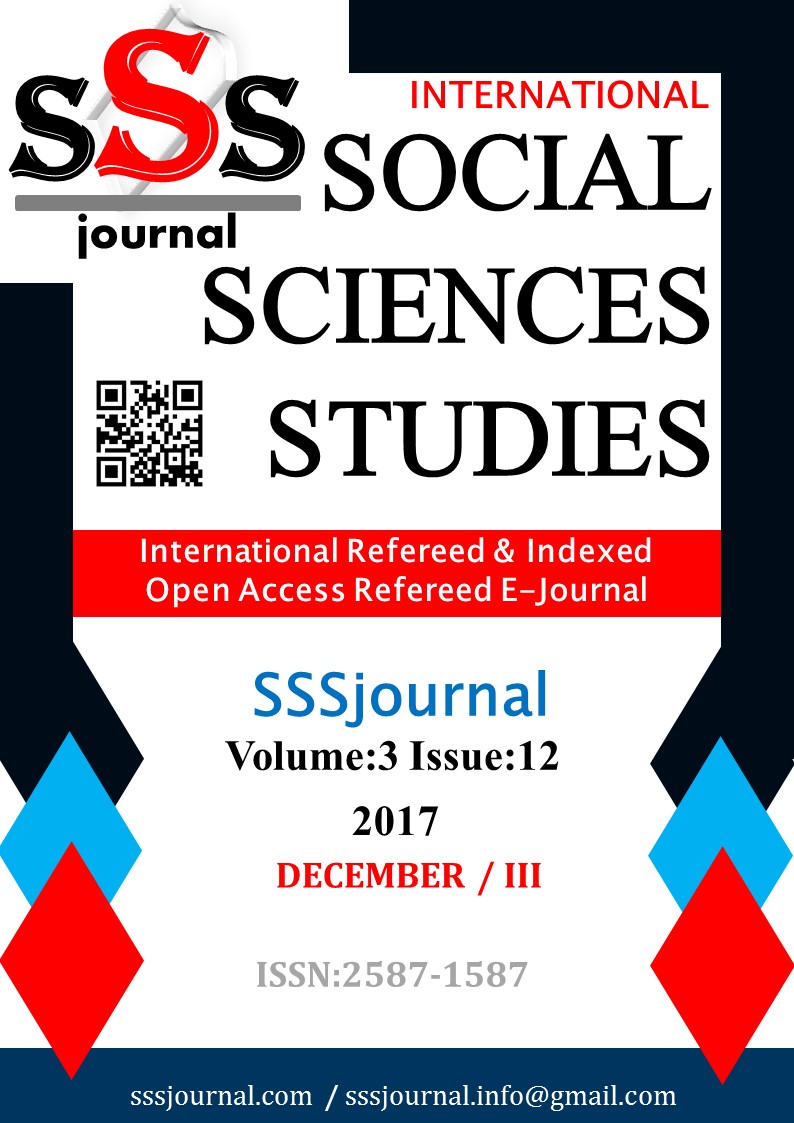Author :
Abstract
Tarih yazımı veya tarih disiplini, eski çağlardan bu yana erkek etkinliğinin, eril bir söylemle kronolojik olarak aktarılması şeklinde ilerlemiştir. Tarih, çağlar buyunca erkekler tarafından yazıldığı için tarih metninin içerisinde kadın faaliyetlerine doğrudan rastlanılması oldukça güç hale gelmiştir. Geçmişte meydana gelen bütün savaşların, barışların, devrimlerin, çağ kapatıp çağ açan olayların öznesi veya baş kahramanı her zaman erkekler olmuştur. Tüm bu olaylar yaşanırken kadınlar ne yapıyordu? Sahnede yer almamak kendi seçimleri miydi, yoksa bilinçli olarak tarih sahnesindeki etkinlikleri yok mu sayılmıştı? İçerisinde toplumun yarısını oluşturan kadınların etkinliklerinin görünür olmadığı bir tarih disiplini, evrensellik iddiasıyla çelişmez mi? Eril söylem kadına hiç yer vermiyor değildi elbette, ancak, kurguladığı kadın imgesi tarihin akışını bozan "kötü", "aklı ermez", "entrikacı" veya "tuzak" gibi metaforlar şeklinde karşımıza çıkmaktaydı. Bu durumda tarih metni içerisinde kadın aktivitelerini doğrudan tespit etmek oldukça güçleşmiş ve ancak 19. yüzyıldan itibaren dolaylı yollar kullanılarak “aşağıdan tarih” yöntemiyle kadın görünür hale getirilmiştir. Kadın imgesi bazen de “güçlü” erkeğin gölgesinde bırakılarak, varlık sebebi, bir erkeğin yakınında bulunmasına indirgenmiştir. Bu çalışmada kadın etkinliğinin tarihsel metin içerisinde görünür olmamasının nedenleri üzerinde durulacak ve feminist tarihyazımıyla beraber kadının yeniden görünür hale getirilme çabası irdelenecektir. Bu bağlamda çalışmada tarihin farklı dönemlerinde yaşamış dört kadın portresi kullanılarak örneklendirme yapılacaktır.
Keywords
Abstract
Historiography or discipline of history has made progress from the ancient times in the way of chronologically transferring of the male activity with a masculine discourse. It has become very difficult seeing activities of women directly within the text of the history since the history has been written by men for centuries. The men have always been the subjects or the main heroes of all wars, peace, revolutions and events ending one era while opening another have occurred in the past. What were the women doing when all this occurred? Was it their own choices not being on the stage or were their activity on the stage of the history being ignored consciously? Isn’t a conflict to the claim of the universality that the history discipline in which the activities of the women of the community are not visible? The masculine discourse refers to women of course, but the image of the woman that they fictionalized was in the form of metaphors such as "evil", "foolish", "intriguer" or "trap." In this case, it has become very difficult identifying activities of women directly within the text of the history but since the 19th century; women have been become visible via the "history from below" method by using indirect ways. The women’s image has been in the shadow of the "powerful" man and their reason for being has been also degraded to be present nearby a man. This study will focus on why activity of women is not visible in the historical text, and attempt to re-visualize women with feminist historiography will be examined. In this regard, the study will be performed by using four female portraits that lived in different periods of the history.
Keywords
- ARİSTOTELES, Politika, İstanbul, 2017.
- ARİSTOTELES, Politika, İstanbul, 2017.
- BENNETT, Judith M., “Feminism and History”, Gender & History, Vol. 1, No. 3, Autmn 1989, s. 251-272. BERKTAY, Fatmagül, “Kendine Ait Bir Tarih”, Tarih ve Toplum, Mart 1999, sayı 183, s. 47-54.
- BERKTAY, Fatmagül, Tarihin Cinsiyeti, İstanbul, 2012.
- BLOCH, March, Tarih Savunusu veya Tarihçilik Mesleği, İstanbul, 2013.
- BUBER-NEUMANN, Margarete, İki Diktatörlük Altında Stalin ve Hitler’in Mahkumu, Ankara, 2012. BURKE, Peter, Tarih ve Toplumsal Kuram, İstanbul, 2013.
- COLLINGWOOD, R.G., Tarih Tasarımı, Ankara, 2013.
- 44 Margarete Buber – Neumann, İki Diktatörlük Altında Stalin ve Hitler’in Mahkumu, Ankara, 2012, s.249. 45 Margarete Buber – Neumann, a.g.e., s. 250.
- ÇAHA, Ömer, Sivil Kadın-Türkiye’de Kadın ve Sivil Toplum, Ankara, 2010. ÇAKIR, Serpil, Osmanlı Kadın Hareketi, İstanbul,2013.
- ÇAKMAK, Diren, “Fransız Devrimi’nde Kadın: Eksik Yurttaş”, Ege Akademik Bakış, 7 (2) 2007, s. 727-745. DAVIDOFF, Leonore, Feminist Tarihyazımında Sınıf ve Cinsiyet, İstanbul, 2012.
- DZIELSKA, Maria, İskenderiyeli Hypatia, İstanbul, 1999
- ERLAT, Jale, “Fransız Devrimi, Manon Phlipon ve Diğerleri”, Hacettepe Üniversitesi Edebiyat Fakültesi Dergisi, C. 25, S. 2, Ankara, 2008, s. 95-112.
- HOLLAND Jack, Mizojini-Dünyanın En Eski Önyargısı Kadından Nefretin Evrensel Tarihi, Ankara, 2016
- PEIRCE, Leslie, Ahlak Oyunları-1540-1541 Osmanlı’da Ayntab Mahkemesi ve Toplumsal Cinsiyet, İstanbul, 2005.
- PELIZZON, Sheila Margaret, Kadının Konumu Nasıl Değişti? Feodalizmden Kapitalizme, Ankara, 2009 SCOTT, Joan W., Feminist Tarihin Peşinde, İstanbul, 2013.
- STANFORD, Michael, Tarihin İncelenmesi İçin Bir Kılavuz, İstanbul, 2010.
- TUĞ, Başak, “Tarih ve Toplumsal Cinsiyet”, içinde: Toplumsal Cinsiyet Tartışmaları, haz. Feryal Saygılıgil, Ankara, 2016, s.33 - 49.
- ÜSTE, R. Bahar, “Hegel-Rousseau, Mill ve Hayek’in Değerlendirmelerinde Toplumda Ötekileştirilen‘Kadın’ın Konumu”, Dokuz Eylül Üniversitesi Edebiyat Fakültesi Dergisi, C. 3, S. 4, İzmir, 2014, s. 103-126. WOLLSTONECRAFT, Mary, Kadın Haklarının Gerekçelendirilmesi, İstanbul, 2012.
- YILMAZ, İlkay, “Osmanlı Kadın Tarihine İlişkin Birkaç Not”, Kadın Araştırmaları Dergisi, S. 10, İstanbul, 2012, s. 61-81.





